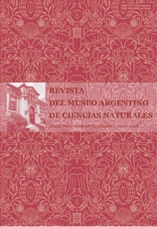Paleocomunidades vegetales del centro de Tierra Del Fuego durante el Holoceno temprano y tardío
Resumen
Plant Palaeocommunities of Central Tierra del Fuego during the Early and Late Holocene.
This study presents new data for the history of vegetation of central Tierra del Fuego. The goal is to identify the
vegetation types before and after the middle Holocene, having in mind previous studies proposing a forest
expansion started in early Holocene times following a SW-NE precipitation gradient. Two segments of a Sphagnum
peat bog profile (R-2: 54°32’S, 67°04’W), now surrounded by the Nothofagus pumilio (Poepp et Endl.) deciduous
forest, were analyzed. The following results were obtained through the modern analogs method: steppe and
woodland were found in the older segment and open and closed forest in the younger segment. We concluded
that an asynchronous establishment of the involved plant communities occurred. In fact, ca. 7000 years BP,
while in other sites of the central island forests were already established, in R-2, located eastwards from those
sites, the steppe-woodland ecotone dominated. On the other hand, from ca. 2000 years AP to modern times both
open and closed forests covered the central area. The humidity carried by the Southern Westerlies could have
influenced the late development of Nothofagus. This study represents an advancement in the knowledge of the
vegetation history, and provides new data about the asynchrony in the establishment of communities.
This study presents new data for the history of vegetation of central Tierra del Fuego. The goal is to identify the
vegetation types before and after the middle Holocene, having in mind previous studies proposing a forest
expansion started in early Holocene times following a SW-NE precipitation gradient. Two segments of a Sphagnum
peat bog profile (R-2: 54°32’S, 67°04’W), now surrounded by the Nothofagus pumilio (Poepp et Endl.) deciduous
forest, were analyzed. The following results were obtained through the modern analogs method: steppe and
woodland were found in the older segment and open and closed forest in the younger segment. We concluded
that an asynchronous establishment of the involved plant communities occurred. In fact, ca. 7000 years BP,
while in other sites of the central island forests were already established, in R-2, located eastwards from those
sites, the steppe-woodland ecotone dominated. On the other hand, from ca. 2000 years AP to modern times both
open and closed forests covered the central area. The humidity carried by the Southern Westerlies could have
influenced the late development of Nothofagus. This study represents an advancement in the knowledge of the
vegetation history, and provides new data about the asynchrony in the establishment of communities.
Texto completo:
PDFEnlaces refback
- No hay ningún enlace refback.

This work is licensed under a Creative Commons Attribution 3.0 License.

